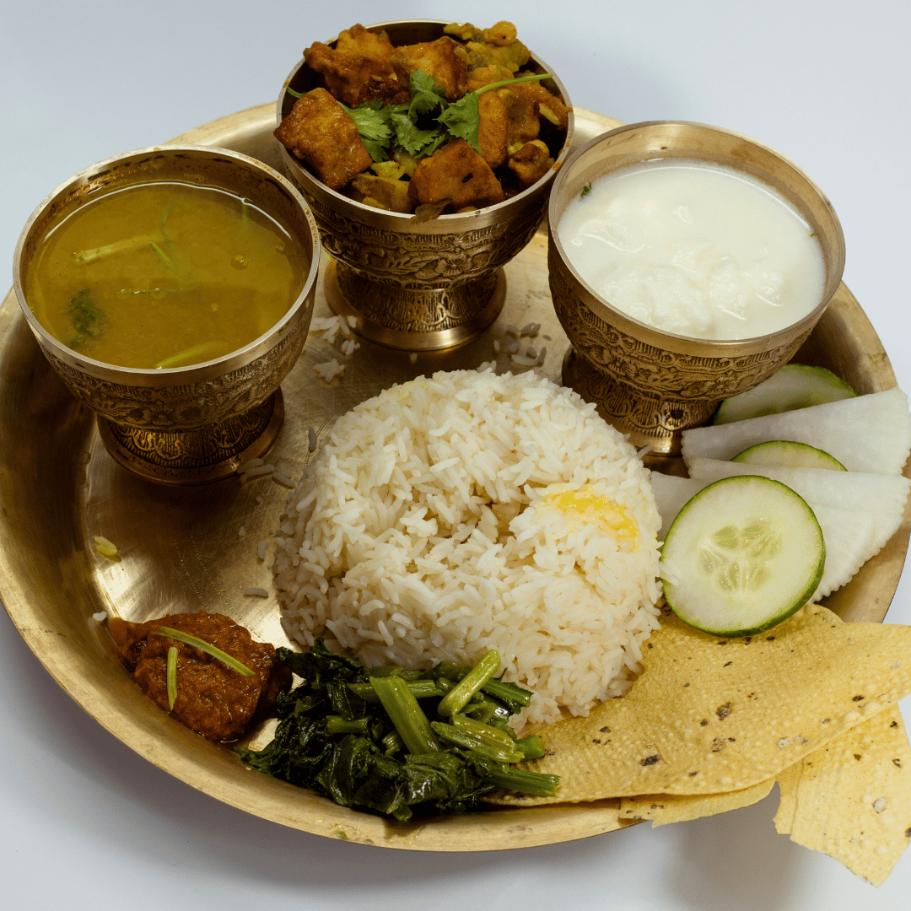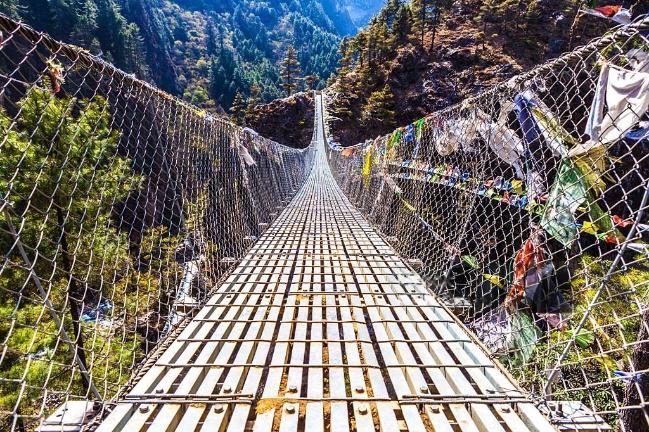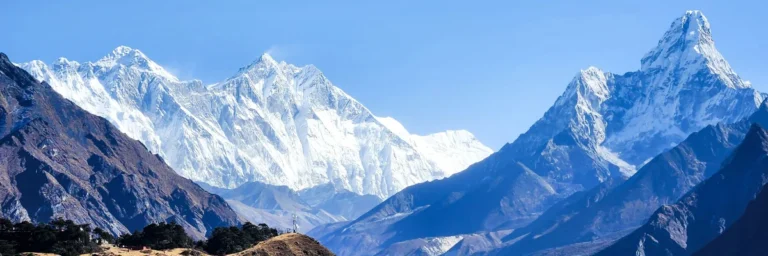Hiking to Mt. Everest Base Camp is a challenging adventure. It attracts thousands of trekkers. This adventure provides incredible views and a feeling of great achievement. However, exploring this tough area can be difficult and risky. It’s important to focus on safety to have a fun and secure trip.
Table of Contents
Preparing for Hiking to Mt. Everest Base Camp
Choosing the Right Gear and Equipment
When preparing for a trek to Mt. Everest Base Camp in Nepal, it’s important to consider several factors while choosing gear and equipment:
- The high altitude and challenging terrain require specialized items like sturdy trekking boots with good ankle support.
- Clothing should be layered for varied weather conditions, including thermal layers for cold temperatures and waterproof outerwear for snow or rain.
- Water purification systems are necessary due to the limited clean water sources along the trail.
- Essential items like sunglasses and sunscreen should be packed for protection against the Himalayan sun.
- A first aid kit is crucial for emergencies.
To properly prepare for the adventure, consider:
- Acclimatization days are needed to adjust to high-altitude conditions and prevent acute mountain sickness.
- Accommodations in teahouses and lodges along the trail for rest and recovery between trekking days.
By packing wisely and thoughtfully, hikers can conquer the challenging EBC trek with confidence and comfort.

Understanding the Terrain and Altitude
When planning hiking to Mt. Everest Base Camp in Nepal, it’s important to consider various factors.
The trail passes through forests, Sherpa villages like Namche Bazaar, and high-altitude regions like Dingboche. Preparation, both mentally and physically, is utmost necessary due to the challenge of high-altitude trekking, which can lead to acute mountain sickness (AMS).
Acclimatization days at places such as Namche Bazaar and Dingboche are essential to adjust to the altitude. Teahouses and lodges provide accommodations along the way, and water purification methods are again crucial. Understanding the weather, seasons, and terrain features like snow, mountains, and lakes is vital.
Many hikers hire porters to carry their gear, allowing them to focus on the adventure, which is, of course, a nice decision to fully enjoy the adventure without much hassle.
Hiking to Mt. Everest Base Camp holds historical significance as the starting point for legendary climbers like George Mallory, Edmund Hillary, and Tenzing Norgay on their expeditions to summit Mount Everest via the Khumbu region.

Planning Your Travel Time to EBC
Travelers planning a trip to Everest Base Camp should aim to plan ahead for about 6–12 months. This will help secure permits, accommodations, guides, and porters. When deciding on the best time to travel, factors to think about include the season, trek difficulty, altitude, acclimatization, and available lodgings. It’s important to allow enough time for the trek from Lukla to EBC, passing through villages like Namche Bazaar and Dingboche, and for acclimatization stops.
The region faces tough high-altitude conditions, with snow, so having proper gear and water purification methods is crucial.

Safety Tips for Hiking to Mt. Everest Base Camp
Acclimatization and Altitude Sickness
Effective acclimatization is important for hiking to Mt. Everest Base Camp in Nepal.
To acclimate well to the high altitude, trekkers need to gradually ascend and enjoy the views while letting their bodies adjust to the thin air. Spending time in Namche Bazaar, Dingboche, or other Sherpa villages can help before reaching Everest Base Camp. Resting, staying hydrated, and eating local food for energy are helpful for acclimatization.
Altitude sickness symptoms like headache, nausea, and fatigue should be taken seriously; resting, drinking water, and descending when needed can prevent severe cases. Taking precautions like purifying water, choosing proper accommodations, and hiring experienced support are important for a safe trek in the unpredictable Himalayan weather.
To understand more about Altitude sickness in the Everest Base Camp Trek in Nepal. Click Survival Guide: Altitude Sickness at Everest Base Camp
Food and Hydration
Food and hydration options along the trek to Mt. Everest Base Camp are mainly available in teahouses and lodges along the trail. They offer a variety of meals and beverages suitable for hikers.
Hikers can enjoy local Nepalese cuisine like dal bhat (which is a very famous one) and Sherpa stew, as well as Western dishes to cater to different preferences. Staying hydrated at high altitudes is a very important step to avoid altitude sickness. It’s important for hikers to drink plenty of purified water to replenish fluids lost due to the dry and cold weather.

What is Dal Bhat?
Dal bhat, a Nepalese staple, combines lentil soup and boiled rice, offering a balanced mix of carbs, protein, fiber, and essential nutrients. Rich in plant-based protein and low in fat, it supports digestive health and provides sustained energy. Loved for its affordability and comforting taste, dal bhat is a beloved choice across Nepal, symbolizing the heart of Nepalese cuisine.
Proper food and hydration choices are vital for a successful Everest Base Camp trek. They ensure hikers are well-nourished and hydrated throughout the challenging journey.

Walking Techniques in High Altitudes
When hiking to Mt. Everest Base Camp in Nepal, it’s important to use effective walking techniques at high altitudes.
Adjusting your walking pace and rhythm is key to avoiding altitude sickness and staying safe on the trail from Lukla to Kathmandu.
The Khumbu region has unpredictable weather and tough terrain, so trekkers need to be cautious and adjust their pace accordingly.
With proper preparation and guidance from experienced Sherpa guides, hikers can complete the Himalayan journey successfully.
Hiking to Mt. Everest Base Camp in Nepal is an amazing adventure that requires determination, acclimatization, and appreciation for the beautiful but challenging surroundings.

Benefits of Hiking to Mt. Everest Base Camp
Great about the EBC Trek
The EBC Trek in Nepal is a thrilling adventure through the Himalayan region. It leads hikers to the famed Everest Base Camp.
There are various benefits to hiking to Mt. Everest Base Camp:
- Physical Fitness: The challenging terrain and high altitude of the trek require endurance and strength, enhancing cardiovascular health, muscle strength, and overall fitness.
- Mental Well-being: Getting oneself in the natural beauty of the Himalayas can reduce stress, anxiety, and depression. The sense of accomplishment upon reaching base camp can boost confidence and mood.
- Cultural Experience: The trek exposes hikers to the unique culture and traditions of the Sherpa people, providing opportunities for cultural exchange and learning.
- Scenic Views: The trek offers breathtaking views of the world’s highest peaks, including Mount Everest, Lhotse, and Nuptse, as well as stunning landscapes, glaciers, and valleys.
- Adventure and Challenge: Hiking to Everest Base Camp is a once-in-a-lifetime adventure that pushes individuals out of their comfort zones, fostering resilience, determination, and a spirit of adventure.
- Connection with Nature: Being surrounded by pristine nature allows hikers to disconnect from the stresses of daily life and reconnect with the natural world, promoting mindfulness and inner peace.
- Social Interaction: The trek provides opportunities to meet fellow adventurers from around the world, fostering new friendships and a sense of camaraderie.
- Personal Growth: Overcoming physical and mental challenges during the trek can lead to personal growth, self-discovery, and a deeper understanding of one’s capabilities.
- Environmental Awareness: Experiencing the fragile ecosystem of the Himalayas firsthand can instill a greater appreciation for nature and a sense of responsibility to protect the environment.
- Memorable Experience: Hiking to Everest Base Camp creates lasting memories and stories to cherish for a lifetime, making it a truly unforgettable experience.
Accommodations and Costs along the Route
Accommodations along the route to Mt. Everest Base Camp vary. They range from basic teahouses to more comfortable lodges. Costs depend on the desired level of comfort.
Teahouses are budget-friendly. They offer simple rooms and communal dining areas. Lodges, on the other hand, provide more amenities at a higher price. In places like Namche Bazaar and Dingboche, hikers can find tea houses with reasonable rates for a more economical trek.
To prepare financially, hikers should budget for each night’s stay. This should include extra costs for meals, water purification, and any needed amenities. Adequate funds for accommodations are essential for a safe and successful journey in high-altitude trekking.
Understanding the costs and options available for accommodations is key for hikers to better prepare for their Everest Base Camp trek. It allows them to enjoy the adventure of a lifetime in the Himalayas.



Highlights of the EBC Trip
Highlights of the EBC trek through Nepal to the Everest Base Camp are numerous.
From the bustling city of Kathmandu to the thrilling flight into Lukla, each step of the journey promises an adventure.
Passing through the picturesque trail to Namche Bazaar offers the first view of the Himalayan peaks, which is unforgettable.
Acclimatization days and encounters with friendly Sherpa people add a unique charm to the trek.
The challenge of navigating high-altitude terrain to Dingboche and witnessing stunning snow-covered peaks like Mount Everest, Lhotse, and Nuptse is awe-inspiring.
The accommodations in cozy teahouses, experiencing changing weather conditions, and resting in the peaceful lakeside town of Dingboche are all highlights of the trip.
The rite of passage of reaching the base camp and paying homage to legendary climbers like George Mallory and Sir Edmund Hillary make the EBC trek a truly remarkable expedition.
Additional Services for Hikers to Mt. Everest Base Camp
Porter Service and Hiring Locals
Porters are local individuals in Nepal. They know the challenging terrain, high-altitude conditions, and unpredictable weather of the trek to Mt. Everest Base Camp.
By letting porters carry heavy gear, trekkers can focus on acclimatizing and enjoying the adventure. They can also explore Sherpa villages and the stunning landscapes of the Khumbu region.
Also, hiring local porters supports the economy and provides insights into Sherpa culture.
Porters also help navigate dangerous sections like the Khumbu Icefall and high-altitude passes. This ensures a successful journey to Everest Base Camp.
History and Cultural Aspects of the Region
The region surrounding Mt. Everest Base Camp has a rich history that includes the expeditions of George Mallory and Sir Edmund Hillary in 1953. They were the first to successfully summit Mount Everest.
The Everest region is not just about its breathtaking beauty and challenging terrain; it’s also a place rich in history and culture. For generations, the Sherpas and other indigenous groups have lived in harmony with this rugged land, shaping their own unique ways of life that are deeply rooted in the mountains. Mount Everest is not just a giant peak; it’s a revered symbol for the Sherpa people, who see it as a sacred entity.
Throughout time, this region has been a magnet for adventurers, explorers, and spiritual seekers from all corners of the globe. The allure of the highest mountain on Earth and the diverse cultures that thrive in its midst have drawn people in, creating a colorful tapestry of traditions and stories.
Today, the Everest region is a blend of old and new, where ancient rituals blend with modern influences. It’s a place where you can witness a dynamic mix of customs and beliefs, creating a vibrant cultural mosaic that continues to fascinate both visitors and researchers. The Everest region is not just a physical journey; it’s a journey through time and traditions, offering a glimpse into a world where nature and culture intertwine in a beautiful dance of life.
Itinerary for Hiking to Everest Base Camp
When planning a trek to Everest Base Camp in Nepal, it’s important to include recommended stops and durations along the trail. Here are some key points to keep in mind:
- Start your journey from Kathmandu and take a flight to Lukla before beginning the trek.
- Important stops along the way include Namche Bazaar, Dingboche, and Lobuche before reaching Everest Base Camp.
- Acclimatization days in Namche Bazaar and Dingboche are crucial for adjusting to the high-altitude conditions. Plan for rest days at these locations to prevent altitude sickness.
- Teahouses and lodges in the Khumbu region offer accommodations for trekkers.
- During the trek, you’ll encounter snow-covered terrain, Sherpa villages, and stunning views of Mount Everest, Lhotse, and Nuptse.
- Proper acclimatization, water purification, and awareness of symptoms of acute mountain sickness are essential for a successful expedition.
- The itinerary for an Everest Base Camp trek should prioritize safety, acclimatization, and enjoying the natural beauty of the Himalayan region.

Final thoughts
When hiking to Mt. Everest Base Camp, safety should be the top priority.
- Be prepared for extreme weather, altitude sickness, and challenging terrain.
- Carry essential gear and stay hydrated.
- Acclimatize properly to prevent altitude-related illnesses.
- Hire a local guide for navigation and emergency assistance.
- Follow established trails and notify someone of your itinerary.
- Be cautious of avalanches.
Prioritizing safety is essential when heading on this demanding trek.
You may also like:
Send an Enquiry
Error: Contact form not found.
© 2026 - Himalayan Trekking and Tours (P) Ltd. All Rights Reserved.







